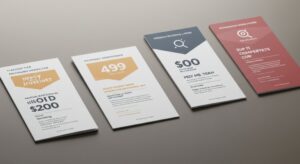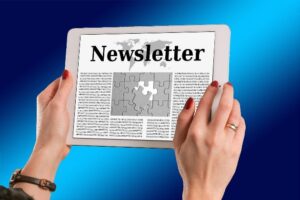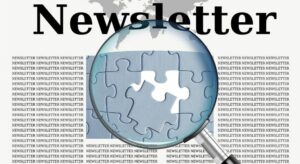Introduction
Think about the last time you read an internal newsletter and thought, Wow, this is actually interesting. Can’t recall? You’re not alone. Most HR newsletters are snooze-worthy, drowning in corporate-speak and generic updates. But in 2025, it’s time to flip the script and turn your HR newsletter into something people actually want to read.
Table of Contents
How to Write a Niche HR Newsletter That Engages Professionals

Whether you’re updating employees on company policies, recognizing standout talent, or promoting professional development opportunities, a well-crafted HR newsletter can be your secret weapon for boosting engagement and improving workplace culture. This guide will show you how to write a niche HR newsletter that’s engaging, visually appealing, and strategically tailored to your audience’s needs. Ready? Let’s get started.
1. What Is a Niche HR Newsletter, and Why Is It Important?
A niche HR newsletter is more than just another email in an employee’s inbox. It’s a curated communication tool designed to inform, inspire, and engage a specific group within your organization. Think of it as your inside track to creating a connected and motivated workforce.
Why It Matters:
- Boosts Employee Engagement: Regular updates keep employees in the loop and foster a sense of belonging.
- Improves Internal Communication: A well-organized newsletter ensures key information doesn’t get lost.
- Strengthens Workplace Culture: Celebrating wins and promoting values helps build a cohesive company culture.
Example: A mid-sized tech company introduced a monthly HR newsletter focusing on wellness initiatives, employee recognition, and professional development. Within six months, their internal engagement surveys showed a 20% increase in employee satisfaction.
2. Identifying Your Target Audience
The first step to creating a successful HR newsletter is knowing who you’re writing for. Your audience might include managers, remote employees, new hires, or a combination of these. Tailoring your content ensures it resonates.
Tips for Defining Your Audience:
- Segment Your Workforce: Consider the unique needs of different groups.
- Survey Employees: Ask what content they find valuable.
- Analyze Engagement Data: Identify which topics get the most clicks.
Personalization Strategies:
- Use Employee Names: Personalized subject lines can increase open rates by 26%.
- Targeted Content: Create sections for different teams or roles.
3. Must-Have Content for an Engaging HR Newsletter
Content is king, but only if it’s relevant and interesting. Here’s what you should include:
- Talent Management Updates: Announce promotions, new hires, and role changes.
- Professional Development Opportunities: Share upcoming workshops and training sessions.
- Employee Recognition Stories: Celebrate achievements and milestones.
- Diversity and Inclusion News: Keep employees informed about D&I initiatives.
- Fun Content: Add polls, quizzes, and wellness tips to lighten the tone.
Table Example:
| Content Type | Purpose | Example |
|---|---|---|
| Talent Management Updates | Keeps employees informed | New hire announcements, promotions |
| Professional Development | Supports growth and learning | Upcoming workshops, training sessions |
| Employee Recognition | Boosts morale and engagement | Monthly employee spotlight |
4. How Often Should You Send an HR Newsletter?
Finding the right frequency is key. Too often, and it becomes spammy; too infrequent, and it’s easily forgotten.
Factors to Consider:
- Content Volume: Do you have enough fresh content?
- Reader Preferences: Survey employees on their preferred frequency.
- Analytics Insights: Monitor open rates and adjust accordingly.
Recommendation: Start with a monthly newsletter. If engagement is high, consider bi-weekly updates.
5. Design Elements That Make Your HR Newsletter Stand Out

A visually appealing design can make or break your newsletter. Here’s how to get it right:
Key Design Tips:
- Clean and Modern Layouts: Avoid clutter. Use white space effectively.
- Mobile-Friendly Design: Ensure your newsletter looks great on all devices.
- Images and GIFs: Use visuals to break up text and add personality.
Insert Image Suggestion: Example of a visually appealing newsletter layout with a clean, modern design.
6. Best Tools for Creating and Distributing HR Newsletters
The right tools can simplify the process and enhance your results. Here are some top picks:
- Mailchimp: A leading email marketing platform with customizable templates and automation features.
- Constant Contact: Known for its user-friendly interface and robust tracking tools.
- HubSpot: Offers advanced email marketing capabilities integrated with CRM tools.
- Moosend: Great for automation and responsive templates.
- BeePro: Focused on creating visually appealing email designs.
7. How to Measure Success
Measuring your newsletter’s performance helps you refine and improve. Focus on these key metrics:
- Open Rates: Percentage of recipients who open the email.
- Click-Through Rates (CTR): Tracks engagement with links.
- Employee Feedback: Encourage readers to share their thoughts.
Tips for Using Analytics:
- Identify which sections get the most clicks.
- A/B test subject lines for better open rates.
- Use heatmaps to see how readers interact with the content.
8. Creative Ideas for Unique HR Newsletter Topics
Keep things fresh by mixing up your content. Here are some creative ideas:
- Employee Recognition Stories: Share personal stories and achievements.
- Wellness Challenges: Promote health and fitness.
- Diversity and Inclusion Updates: Celebrate cultural events and initiatives.
- Learning and Development Opportunities: Highlight new training programs.
9. SEO Optimization Tips for Internal Newsletters
Even internal newsletters benefit from SEO. Optimizing content makes it easier for employees to find past issues.
Tips for SEO:
- Use Keywords Naturally: Incorporate relevant keywords like “employee engagement” and “workplace culture.”
- Optimize Subject Lines: Make them descriptive and engaging.
- Internal Links: Link to relevant company resources.
10. Call-to-Action: Make Your HR Newsletter a Must-Read
Every great newsletter ends with a compelling call-to-action (CTA). Encourage employees to engage, share feedback, or contribute.
Examples of CTAs:
- “Got a story to share? Submit it for next month’s spotlight!”
- “Take our quick survey and help shape the next issue.”
Conclusion
Creating a niche HR newsletter that engages professionals in 2025 isn’t just about writing updates—it’s about telling stories, celebrating wins, and fostering connections. By focusing on relevant content, appealing design, and strategic distribution, you’ll turn your newsletter into a valuable resource that employees look forward to. Ready to transform your internal communications? Start crafting your first must-read issue today!
Bonus Tip: Don’t forget to iterate. The best newsletters evolve with reader feedback and changing company needs. Keep things fresh, and you’ll keep your audience hooked.



